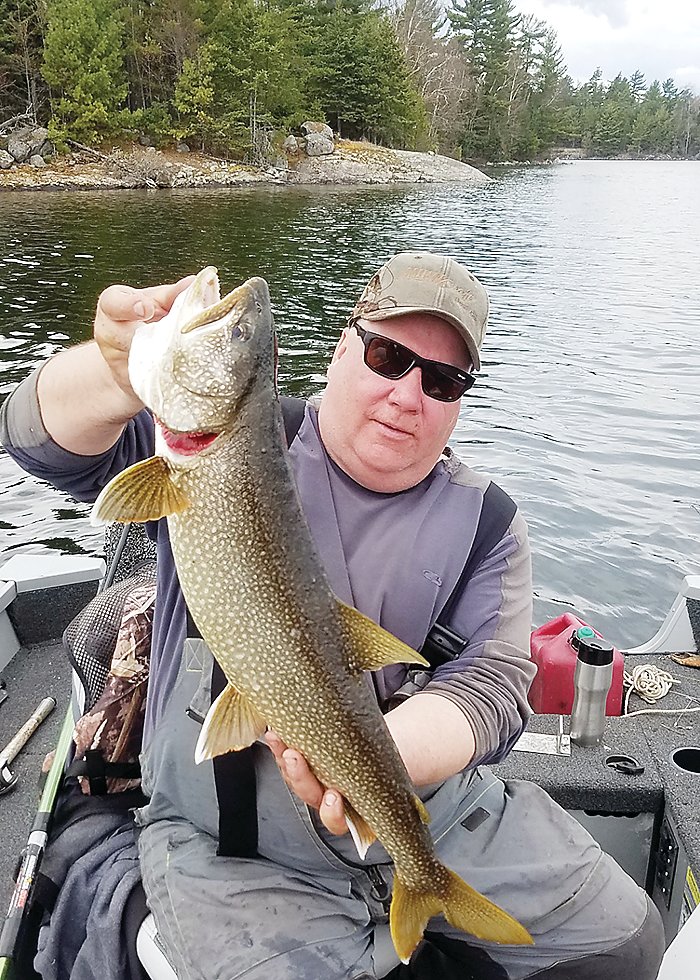Support the Timberjay by making a donation.
Trout Lake rebounds
Lake trout population doing well after anglers had nearly given up on the species here
TROUT LAKE— The lake trout population here is continuing its recovery from its low ebb nearly two decades ago— and DNR fisheries staff aren’t entirely sure why it’s happening.
Back in the …
This item is available in full to subscribers.
Attention subscribers
To continue reading, you will need to either log in to your subscriber account, or purchase a new subscription.
If you are a current print subscriber, you can set up a free website account and connect your subscription to it by clicking here.
If you are a digital subscriber with an active, online-only subscription then you already have an account here. Just reset your password if you've not yet logged in to your account on this new site.
Otherwise, click here to view your options for subscribing.
Please log in to continue |
Trout Lake rebounds
Lake trout population doing well after anglers had nearly given up on the species here
TROUT LAKE— The lake trout population here is continuing its recovery from its low ebb nearly two decades ago— and DNR fisheries staff aren’t entirely sure why it’s happening.
Back in the late 1990s and early 2000s, many anglers had just about given up on catching lake trout here on this big, cold, and clear lake located north of Lake Vermilion in the Boundary Waters Canoe Area Wilderness. “I quit fishing for them,” said Rob Bryers, who grew up on Lake Vermilion and had fished lakers “north of the portage” for years. “It was about the early 1990s when it just tanked,” Bryers recalls.
Speculation abounded as to the reasons why. Some blamed eelpout, while others suggested smallmouth bass were making short work of the younger trout. Despite repeated stocking, it was apparent that the introduced stock was failing to thrive.
Back in 1998, deep water gill nets deployed by the DNR captured just three lake trout during that year’s fish population assessment, a low ebb. Six years later, in 2004, after several substantial stocking efforts, the DNR caught just four lakers in their survey nets. By then, many feared that the lake’s trout fishery could disappear to history.
And then something changed. In 2010, DNR fisheries staff caught ten lakers in their survey nets and that jumped to 21 in 2014. And finally, in 2018, the DNR caught 27 lake trout in their nets— the highest number in memory. “It’s been doing very well,” said Edie Evarts, Tower area fisheries supervisor.
These days, Bryers, who now guides on both Vermilion and Trout, heads to Trout as often as he can and has found from his own experience what the DNR’s test data is also demonstrating— that the lake trout are back at Trout Lake.
“Every trip I’ve taken so far this year, we’ve caught fish,” said Bryers, and in some cases several fish. And that’s unusual for a generally low-density species like lake trout, where catching one or two in a day is considered a successful outing.
Bryers said he finds the situation somewhat surprising given that fishing pressure remains relatively high on the lake and improved fishing technology has made it easier for anglers to fish for trout, even in the summer when they typically inhabit deep water.
“For some reason, it is sustaining itself, despite the situation,” said Bryers.
The DNR doesn’t have good data on Trout Lake fishing pressure, according to Evarts, since the lack of road access to the lake makes it challenging to conduct a creel census, which is the usual method the DNR uses to assess fishing pressure. But Evarts noted that when fishing is good, anglers generally make the effort to take advantage.
Fishing pressure can have a significant impact on trout populations, according to Evarts, since they’re a top fish predator that is rarely found in large numbers. Think muskie, only way better tasting. And, in part, because trout are so highly sought after for eating, anglers tend to keep the fish they catch.
Stocking not a major factor in recovery
While some lakes rely on trout stocking to maintain the fishery, Evarts said the evidence from Trout Lake suggests that stocked fish have had little impact on the recovery— and that has prompted the agency to re-examine its stocking efforts. “The stocked fish don’t seem to be making it, but the natural fish in the lake are doing well,” said Evarts.
During one recent survey using trap nets on reefs where lake trout spawn, the DNR caught 54 lake trout, ranging in size up to 37 inches, and only one was clipped, indicating it was a stocked fish. “We get anecdotal reports from anglers that they almost never catch clipped fish,” said Evarts.
Genetics testing conducted by the DNR also confirms that the native Trout Lake strain of lake trout continues to dominate in the lake. That’s despite an aggressive program of lake trout stocking in recent years, including up to 40,000 yearling fish every other year— most recently in 2018.
Given the lack of road access, the DNR ends up flying the trout in, which is an expensive venture for the DNR. According to Evarts, the DNR is currently revising Trout Lake’s management plan and the agency is considering discontinuing stocking efforts, at least for now. “We’re thinking that the stocking isn’t really giving us any returns,” she said. “It’s a pretty expensive program, having to fly all the yearlings in. It takes more than one trip. If it was working well, we could justify it.”
For now, at least, the natural trout population here appears to have rebounded. And, for anglers like Bryers who love Trout Lake, that’s what matters. “It’s been good and consistent,” said Bryers.






